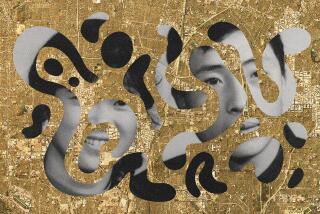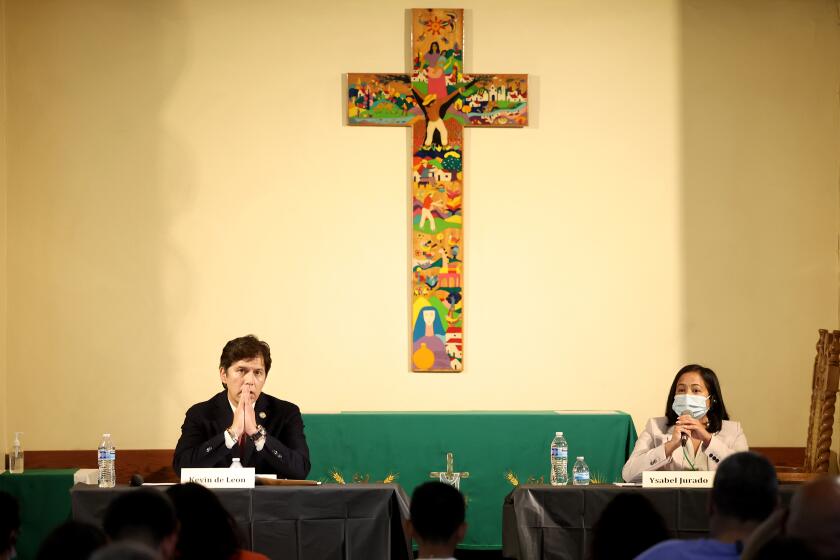Armenian church in Boyle Heights sees a post-pandemic revival: ‘It’s our home’
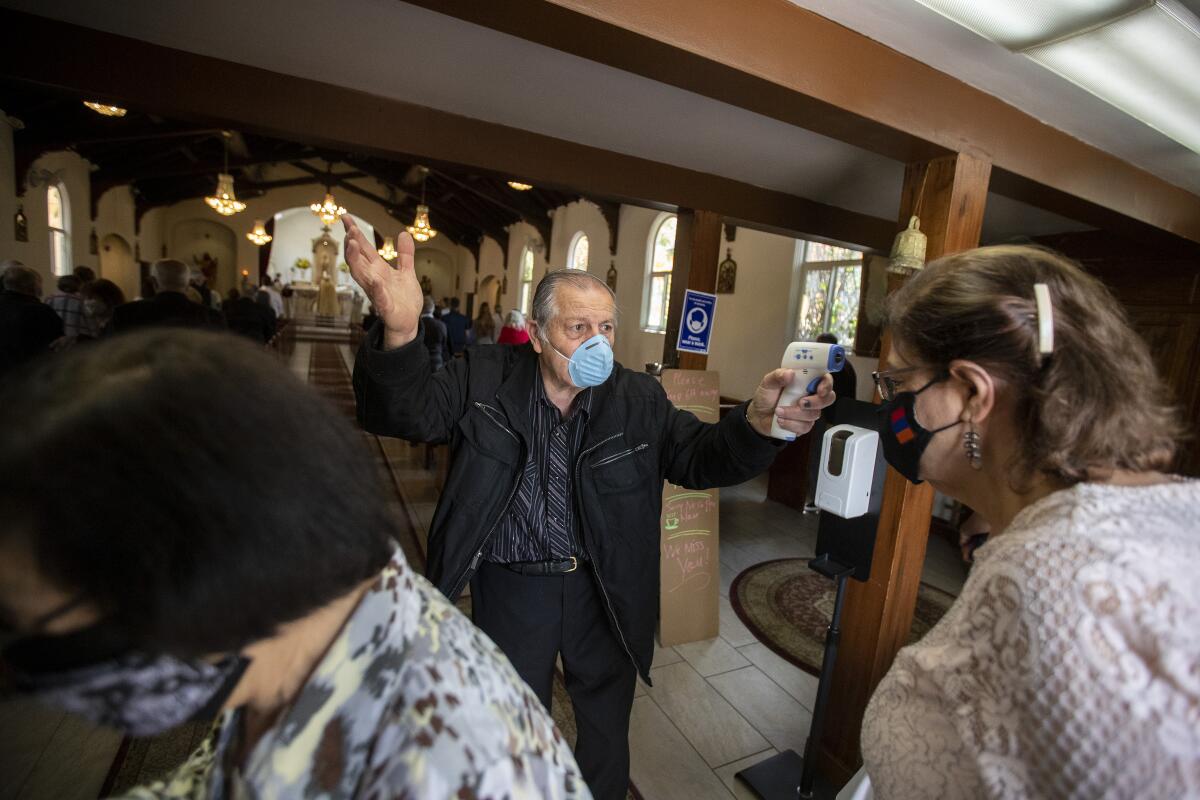
On the outskirts of Boyle Heights, a remnant of the neighborhood’s historic Armenian past is having a revival.
The faithful are traveling from as far away as Simi Valley and Cerritos to pray at Our Lady Queen of Martyrs, a church once deemed the center of Catholic Armenian life in Los Angeles.
Founded in 1952, the church hosted about 400 parishioners weekly in its heyday. The facility celebrated Mass for Armenians in their native tongue, and its cultural center once served as a place to learn about their homeland from local guest speakers.
But over the decades, the cream-colored church’s prominence has been overshadowed by St. Gregory’s cathedral in Glendale.
Nearly all Armenians who once settled in the blocks bordered by Pleasant Avenue and Echandia Street to Prospect Park and Bridge Street have died or moved to more affluent neighborhoods, such as Glendale and Pasadena. And loyal churchgoers more recently were temporarily shut out when Queen of Martyrs closed its doors because of public health orders linked to COVID-19.
Yet amid a year marked by record deaths, unbearable grief and economic uncertainty, the pandemic has unexpectedly found a way to breathe new life into this weathered house of worship.
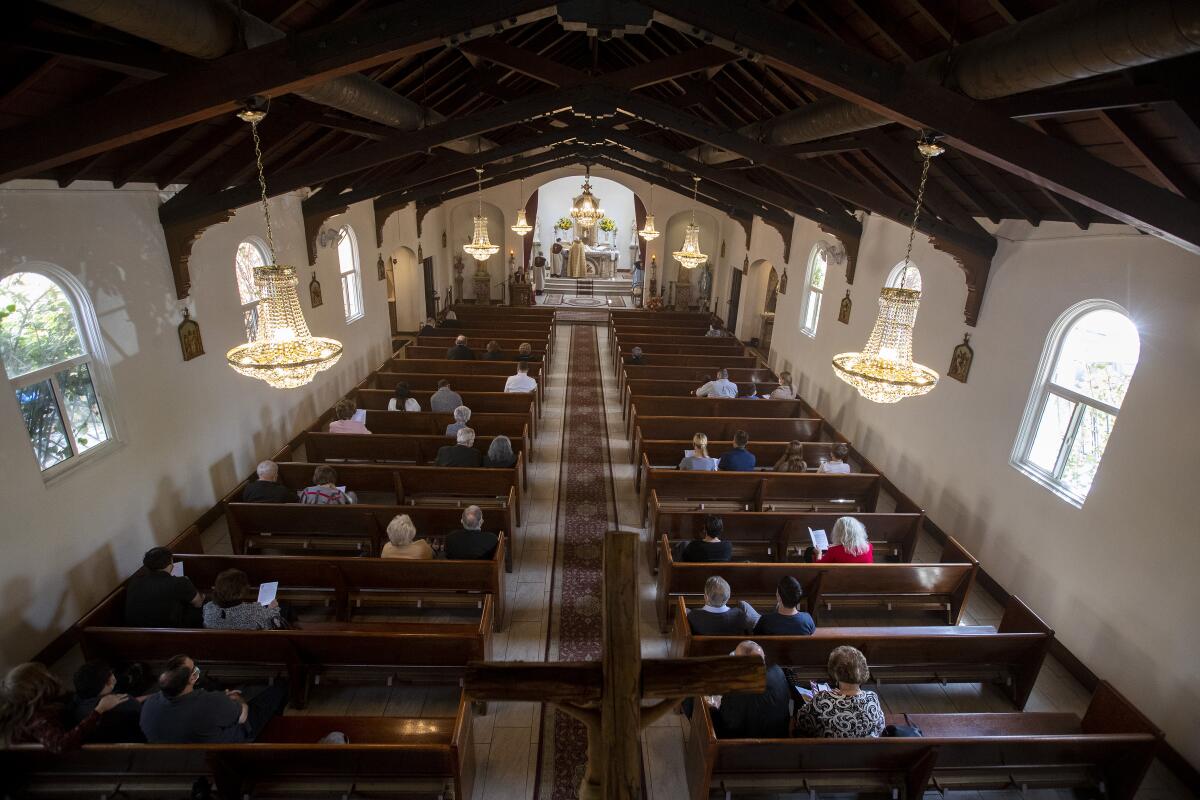
Longtime parishioners are slowly returning to sit in their self-designated, creaky pews. The Rev. Armenag Bedrossian, the church’s sole pastor, is again hosting coffee and lunch after Sunday services. And he’s seeing new, younger faces in the crowd — albeit ones who are wearing face masks.
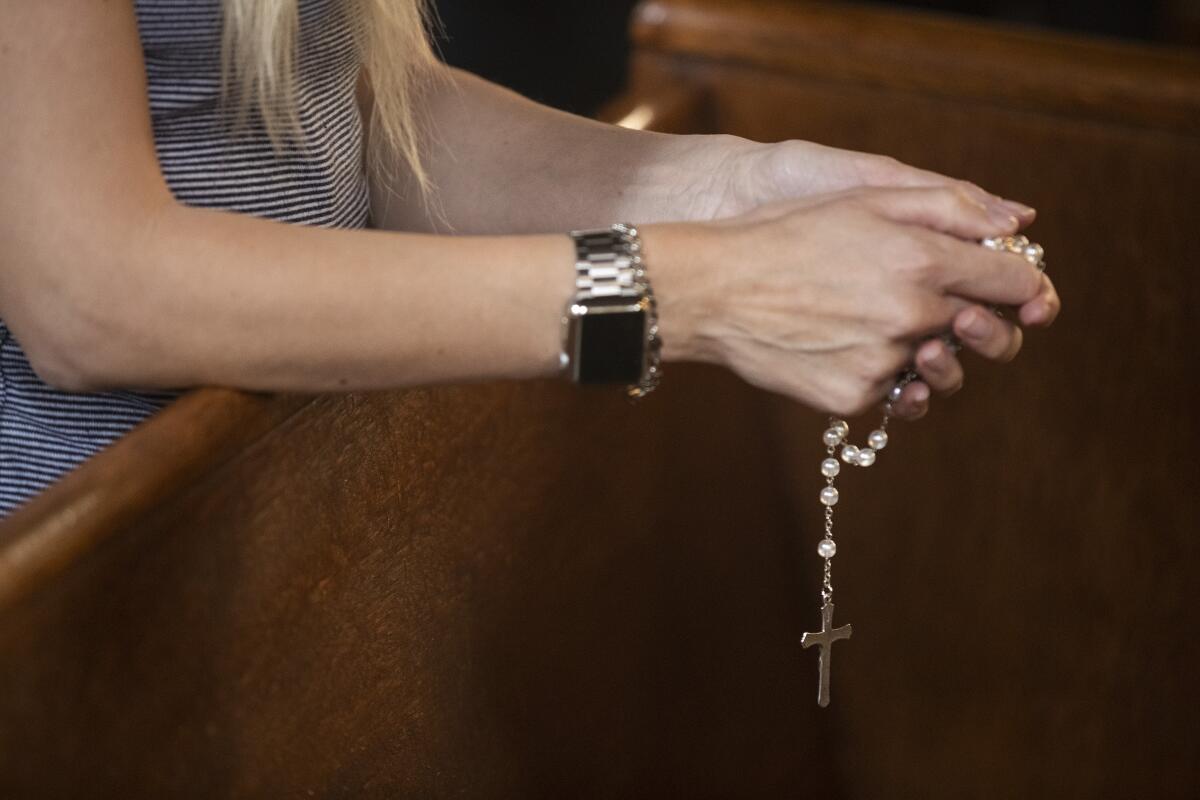
“People want to come back,” Bedrossian said. “I think the pandemic was like a spiritual retreat for them to think. It puts them on top of a hill. Either you are close with God or you’re going to fall on your head. Which one [are] you like?”
Established in 1858, Boyle Heights was once commonly referred to as the Ellis Island of the West Coast. It was Los Angeles’ truest melting pot, a mélange of Mexican, Russian, Japanese, Italian and Jewish settlers. Now, the area is arguably the mecca of Mexican American culture in L.A., with a predominately working-class Latino demographic and landmarks such as El Mercadito and Mariachi Plaza along 1st Street.
But traces of its former ethnic groups can still be found throughout the area. Otomisan, a tiny Japanese restaurant on 1st Street sandwiched between businesses offering services in Spanish and English, still crafts sushi and bento boxes. Breed Street Shul, an Orthodox Jewish synagogue, has been holding services in its brick building since the early 1920s and was designated a city historic cultural monument in 1988. The Evergreen Cemetery is the final resting place for many immigrants, both old and new.
Still, Armenian culture has all but disappeared from the area. Southern California Armenians are more known for their enclaves in Burbank and Montebello.
“The center of Armenian life has shifted to Hollywood, Glendale and Orange County,” said Levon Marashlian, an Armenian historian and professor at Glendale Community College. “It happens to other communities; they move around, and new patterns develop.”
“Most Catholics now go to Glendale cathedral because they live near Hollywood or Glendale, not Boyle Heights,” said Osheen Keshishian, founder and editor of the Armenian Observer, a weekly newspaper chronicling Armenian life since 1969. “It has [a] beautiful hall with lectures and banquets.”
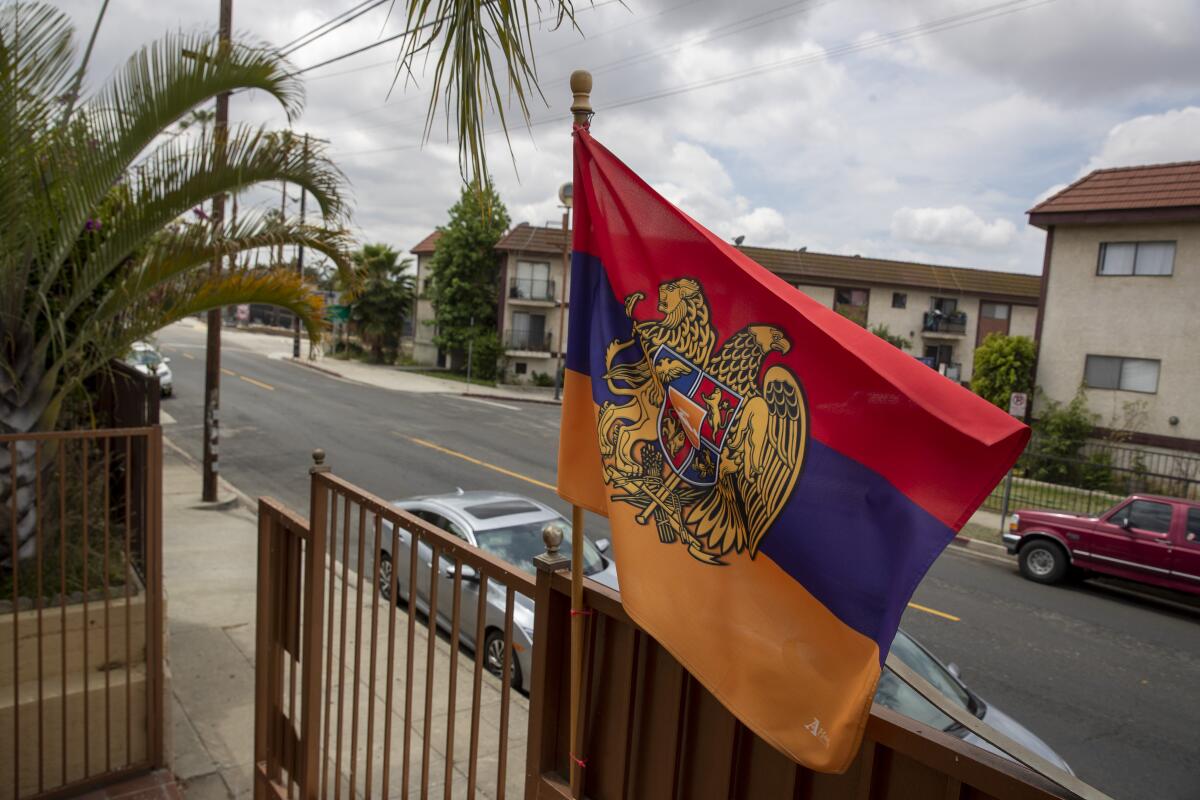
Surrounded by single-family homes and apartment complexes along Pleasant Avenue, Our Lady Queen of Martyrs is again hosting sizeable numbers of Armenians on Sundays. Mass is being celebrated inside after a series of modified, outdoor services to comply with coronavirus safety guidelines. Sunday school has resumed for children too.
“We survived,” said Catherine Alekian Hosharian, 77, a Montebello resident who joined the church when she was 10. “And things have gotten better.”
Most feel a dedication to the parish because of the legacy it carries.
Tens of thousands of Europeans displaced by World War II — including Armenians — lived in German camps until they migrated to California beginning in the late 1940s. For a while, that generation attended Holy Cross, an Orthodox Armenian church in downtown Los Angeles until then-Cardinal James Francis McIntyre learned there was a void in the community. By 1952, Queen of Martyrs had become the first Catholic Armenian parish in California, according to the church’s website.
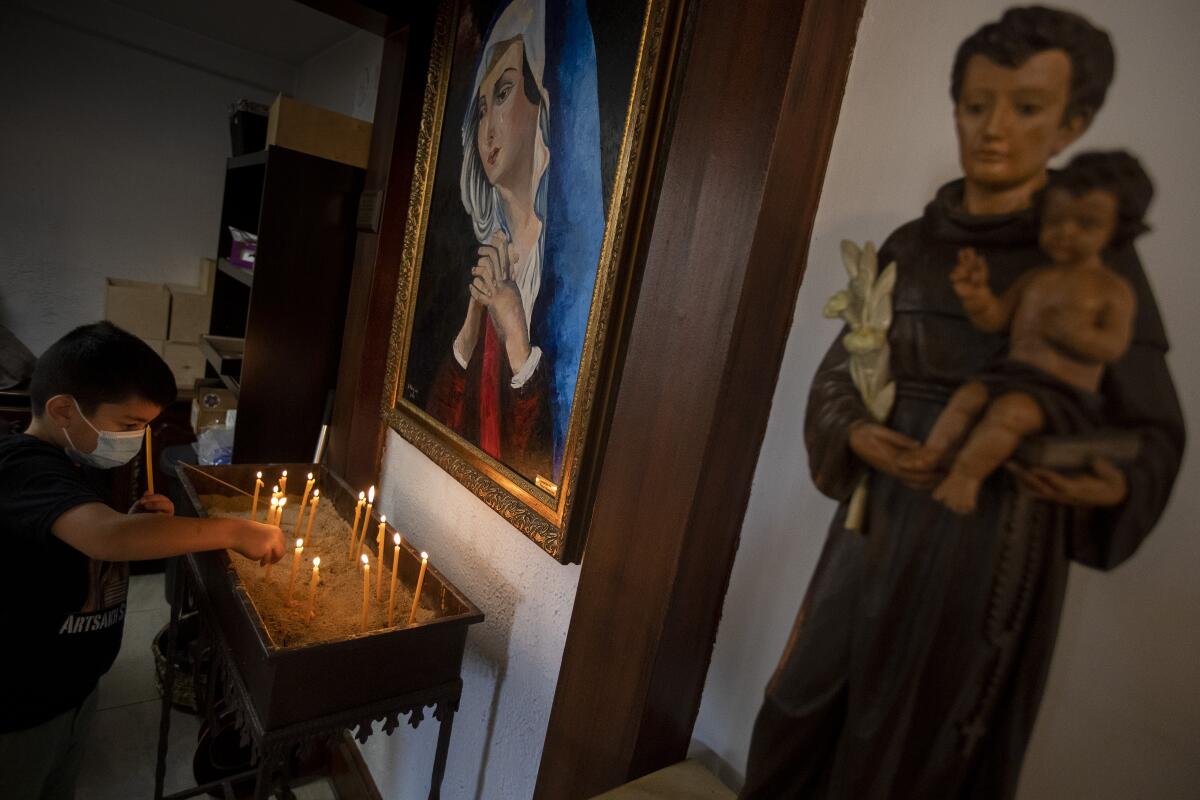
After years without a proper spiritual home, Catholic Armenians created a place of unity to call their own.
“Because Armenians are living outside of Armenia, no matter what denomination, church is not just for religion,” Marashlian said. “It’s a cultural meaning. It’s repository.”
Those uprooted by the war would become the grandparents and parents of the Boyle Heights parishioners.
“We feel like it’s our home,” said Alekian Hosharian, a member of the Ladies Guild, the church’s main source of financial support. “Even though our children don’t come to church, if you ask them, [they’ll say], ‘That’s our church,’ or [they’ll] come if they need a baptism or wedding.”
Simon Hablian, 40, has attended Our Lady Queen Of Martyrs since he was a boy. He remembers his parents and grandmother taking him and his sister to the historic building because it was the closest Armenian Catholic Church to their Glendale home.
Now, the Simi Valley resident bundles his three children into the car every Sunday and drives nearly an hour to attend Mass in downtown L.A.
“It can be any Catholic church, but this one I feel connected to,” he said. “It’s a place I always come to feel peaceful. I love it with all my heart.”
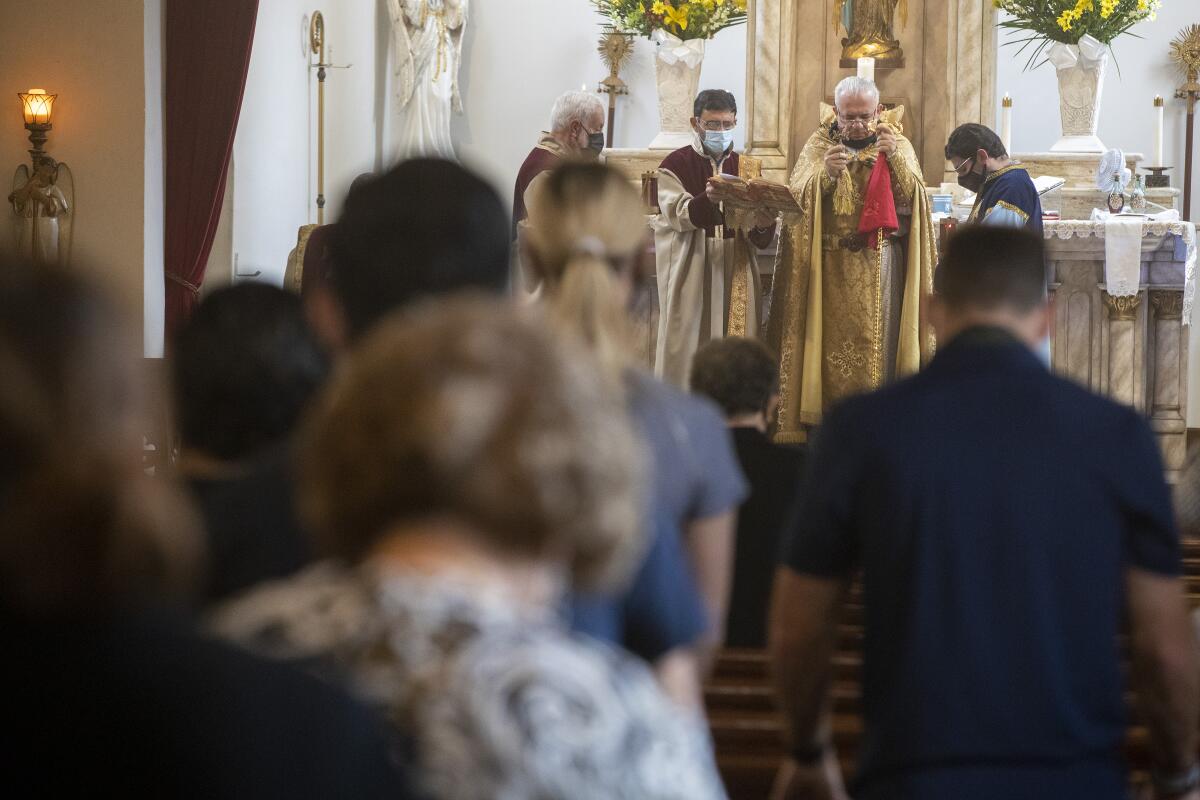
His children were baptized at Queen of Martyrs, just like he was. As one of the younger worshipers, Hablian said he’s pleased to see fresh, new faces.
Among the new parishioners are the Vallefuocos, who fell in love with the resurgent church community a few months ago. They were part of a close friend’s intimate wedding ceremony at the church that was officiated by Bedrossian. Spiritually, something clicked. And Bedrossian’s boisterous demeanor hooked them.
They aren’t practicing Catholics or Armenian and don’t know the language. But “we fell in love with Father David,” Cerritos resident Anna Vallefuoco, 43, said. Her two children recently completed their confirmation and have scheduled their first Communion.
“Even in Armenian, a lot of it transcends language. It doesn’t matter if it’s in a different language. I still understand the meaning and tone,” she said.
Lately, there’s been plenty to celebrate at the Boyle Heights house of worship.
The pandemic is receding. Churchgoers celebrated Armenian Easter on April 4. Three weeks later, President Biden formally recognized the killing of more than 1 million Armenians at the hands of Ottoman Turks beginning in 1915 as genocide — the first U.S. president to do so. The acknowledgement served as a balm amid decades of geopolitical infighting.
It feels like “resurrection,” Bedrossian said.
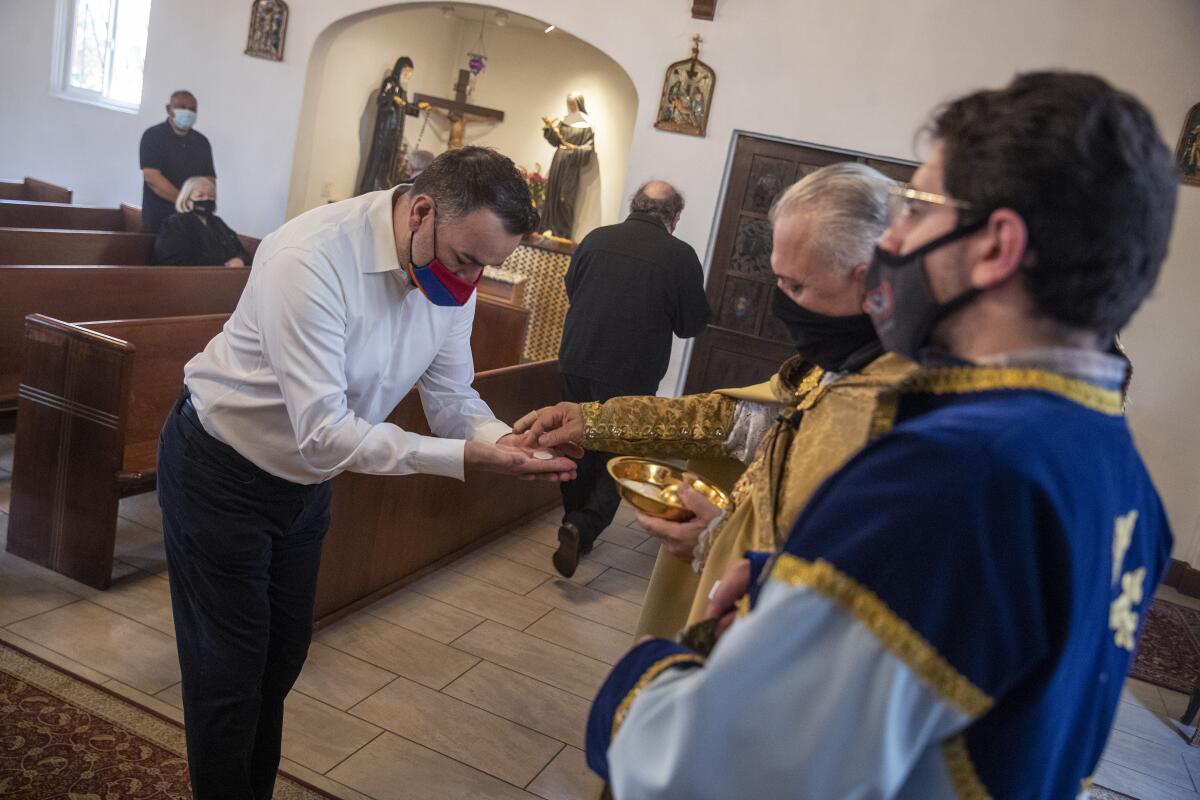
The pastor has acted as the glue for the weathered church, although his faith has been tested.
By the time the new decade dawned, doubt had crept into his soul. The future seemed bleak. His congregation kept aging. What would happen to this church where he had dedicated so much time? It wouldn’t last much longer, he worried.
But now he doesn’t entertain such thoughts and balks at the memory. He is also a changed man, reformed by the intense uncertainty of the pandemic. He is confident in God’s plan and his congregants.
“I always had faith in this community. Otherwise, I would never survive here for 10 years,” he said.
More to Read
Sign up for Essential California
The most important California stories and recommendations in your inbox every morning.
You may occasionally receive promotional content from the Los Angeles Times.



